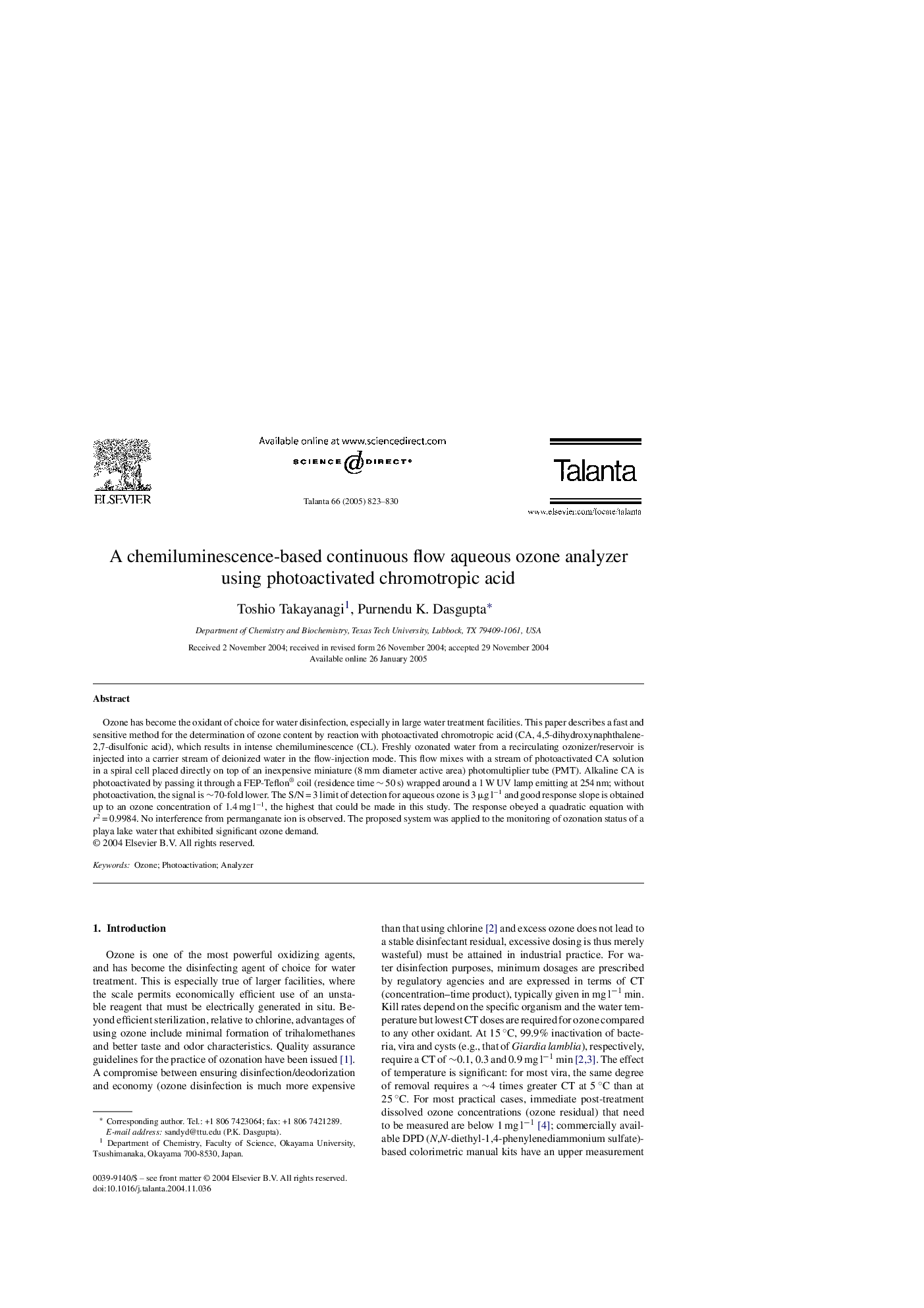| Article ID | Journal | Published Year | Pages | File Type |
|---|---|---|---|---|
| 10561427 | Talanta | 2005 | 8 Pages |
Abstract
Ozone has become the oxidant of choice for water disinfection, especially in large water treatment facilities. This paper describes a fast and sensitive method for the determination of ozone content by reaction with photoactivated chromotropic acid (CA, 4,5-dihydroxynaphthalene-2,7-disulfonic acid), which results in intense chemiluminescence (CL). Freshly ozonated water from a recirculating ozonizer/reservoir is injected into a carrier stream of deionized water in the flow-injection mode. This flow mixes with a stream of photoactivated CA solution in a spiral cell placed directly on top of an inexpensive miniature (8 mm diameter active area) photomultiplier tube (PMT). Alkaline CA is photoactivated by passing it through a FEP-Teflon® coil (residence time â¼Â 50 s) wrapped around a 1 W UV lamp emitting at 254 nm; without photoactivation, the signal is â¼70-fold lower. The S/N = 3 limit of detection for aqueous ozone is 3 μg lâ1 and good response slope is obtained up to an ozone concentration of 1.4 mg lâ1, the highest that could be made in this study. The response obeyed a quadratic equation with r2 = 0.9984. No interference from permanganate ion is observed. The proposed system was applied to the monitoring of ozonation status of a playa lake water that exhibited significant ozone demand.
Keywords
Related Topics
Physical Sciences and Engineering
Chemistry
Analytical Chemistry
Authors
Toshio Takayanagi, Purnendu K. Dasgupta,
